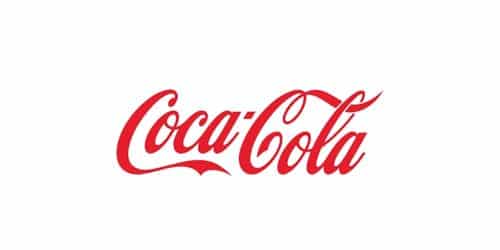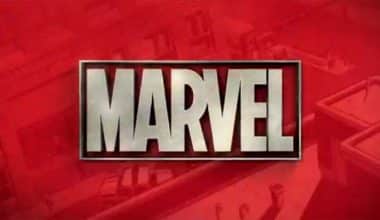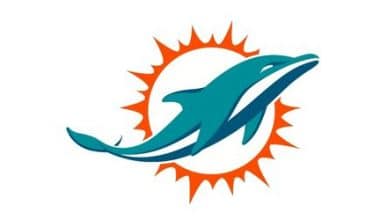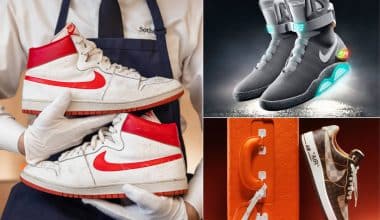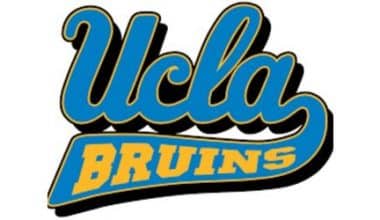The first Coke drinks hit store shelves in 1886. John Stith Pemberton, an optometrist, and the pharmacist were given an award for creating the first recipe. However, it was businessman Asa Griggs Candler who, in 1888, purchased the rights to the Coca-Cola trademark and therefore established the company that bears that name. He started producing the beverage commercially, which led to its eventual worldwide fame. To get more information on the history of the Coke-Cola logo, here is the right article for you.
Coke Logo
Coca-cola’s name is prominently on the demonstration, on each bottle and can. In 1887, famed accountant Frank Robinson came up with this iconic symbol. Modern designers have made some changes to the size, weight, color, and alignment of fonts. Minor tweaks were made, but the logo’s fundamental element of curly lettering in calligraphic handwriting remains the same as before.
Since the brand’s name is made up entirely of words, the designers gave it extra care when it came to typography. Although the font is meant to look like handwriting, the initial “C” letters stand out from the rest of the font because they are farther away and include elaborate curls. Before the development of typewriters, commercial correspondence in the United States often relied on handwritten documents like this one, which is a prime example of Spencer’s handwriting from the 1840s.
The 1890-1891 symbol features a completely different lettering style. The name of the company back then was quite enticing, with its many huge dots and odd curls making the letters look like they were set in a fantasy forest. However, the company’s proprietors opted to revert to using standard Spencerian Script and shelve any further experimentation.
Likewise, there is not a lot of variety in the color scheme. Up until 1891, only black and white insignia was given permission. Eventually, black was no longer associated with Coca-Cola, and the brand became synonymous with vibrant red. The background color is still white, but the colors useful depend on the surrounding content. Some variations are more subtle, such as those with red backgrounds and white text. This color scheme is meant to show that the brand wants to be excellent, pure, optimistic, and young.
Who Invented the Coca-Cola Logo?
Frank Mason Robinson came up with both the drink’s name and its iconic script emblem. Mr. Robinson was John Pemberton’s bookkeeper when Pemberton invented Coca-Cola, but he also had a significant hand in developing the brand. The Spencerian font, the standard for professional writing at the time, served as the inspiration for the Coca-Cola logo.
Coke Logo Symbol
The modern Coca-Cola logo, a traditional two-color design, is straightforward and eloquent in its simplicity.
Coke Logo Swirly Emblem
The Coca-Cola logo that was officially adopted in 1890 looked quite different from the modern, recognizable logotype. Additional spirals were added to the corporate name, giving the emblem a more mystical appearance. With the new logo, the company has a more enticing “fairy tale” vibe. However, the version was useful for one year only.
Coke Logo Shape
The swirly Coca-Cola logo appears almost the same as it was in 1887. The survivability testifies to Frank M. Robinson’s remarkable talent.
Coke Logo Colors
Red and white, as seen in the Coca-Cola logo, are a winning color scheme because they connote vitality, youth, innocence, purity, and top-notch quality.
Coke Logo Font
The brand’s success can be directly linking to its unusual typeface. Its swirly pattern adds a degree of elegance and charm.
Review of Logos
It’s safe to say that you’ve seen the Coca-Cola logo before. Find out what makes the logo so memorable in a hurry.
1. Appropriate
The logo’s continued relevance throughout time is one of the most crucial factors in making it an iconic symbol. Even though a logo’s design isn’t flashy, if it’s meaningful to the target audience, it will become instantly recognizable
A logo’s significance is in how well it communicates the brand’s ethos, principles, and goals to the target audience. Colors, typefaces, symbols, and forms are just some of the tools available to designers for conveying the brand story.
However, the term Coca-Cola has become synonymous with soft drinks, despite the fact that the design does not convey what the firm does. Coke is synonymous with soft drinks in many regions of the world. An effective logo can have that kind of effect.
#2. Incredibly Memorable.
One that instantly resonates with viewers and makes them think of the brand is more likely to be remembered. For a logo to become iconic, it must be easily recognized and remembered by the public.
What, then, is it that makes a logo stand out in the mind? An effective logo is one that is both simple and striking. Rememberable logos combine the aforementioned design components. When put together properly, these visual components convey the spirit and character of the brand. The Coca-Cola logo is a visual delight, with a pleasing arrangement of elements that conveys excitement, merriment, and vitality.
#3. Ease of Use
When it comes to logos, it’s important to keep things as simple as possible. Consumers’ attention may be captured in a matter of seconds by a logo that conveys the core values of the business with little visual clutter. In order to remember even the most complicated symbols, the brain, as shown in numerous trials, first reduces them to their simplest forms.
Minimalism emphasizes empty or white areas within an existing design and the elimination of extraneous elements. Designs with a minimalist aesthetic are now trendy, easy to implement, and effective. Those in the field of graphic design often cite the Coca-Cola logo as an exemplar of minimalistic aesthetics. It requires very little effort yet achieves a lot.
#4. Unchanging
Logos that stand the test of time prioritize quality over quantity. Logos are timeless if they continue to communicate their intended message successfully years after they were first designed. An evergreen logo avoids passing trends in favor of highlighting the company’s core values.
What is the Meaning of the Coke Logo?
The corporation first portrayed professionalism, seriousness, class, power, and purity using a black-and-white color scheme. The soda company later employed the red and white color combination to represent passion, youth, energy, love, purity, and class.
Why is Coca-Cola Changing Its Logo?
Coca-Cola Classic, Diet Coke, and Coke No Sugar didn’t have separate packaging; instead, they were all grouped together under the iconic Red Disc emblem. The most recent version of the Coca-Cola logo is to emphasize that all of its flavors are members of the same family.
Why is the Coca-Cola Logo so Famous?
The distinctive logo design of Coca-Cola is largely responsible for its potent brand identity. In addition to boosting market rivalry, it has ideally reflected the company’s trustworthiness as a priceless intangible asset.
Why Are Coke Bottles Green?
According to the deal, “German Green,” later known as “Georgia Green” in honor of The Coca-Cola Company’s home state, was to be used to tint the bottles.
Does Japan Prefer Coke or Pepsi?
Since the 1950s, Coca-Cola has dominated the beverage industry in Japan, but not because Coke is so well known there. Instead, the American soft drink company has made adjustments to fit the peculiar ways this civilization satisfies its thirst.
What Was Clear Coke Called?
A Tab variant was Tab Clear. It was Coca-contribution Cola’s to the flimsy early 1990s “clear cola” craze. With initially encouraging findings, it was launched in the United States on December 14, 1992, in the United Kingdom a month later, and in Japan in March 1993.
Can I Use Coke Logo?
Simply having the logo in a picture doesn’t exclude selling it, but if it’s the main focus, you’re commercializing Coke’s trademark.
Coke Logo History
The Coca-Cola Company is an American multinational business, and its most well-known product is Coca-Cola. It’s a metaphor for the non-alcoholic beverages sold at drugstores that actually contain cocaine and caffeine. The formula for making carbonated water is now a closely guarded secret. The principal manufacturer uses a proprietary process to create a concentrate that is then sold to bottlers.
Coca-Cola is one of the most recognizable brands in the world, and the Coca-Cola Company deserves the honor of being the sole owner. That logo is instantly recognizable regardless of whether it is typeset in a serif font, script, or even a foreign language. This logo has seen several transformations over the years, but its timeless quality has always been present. This has undoubtedly contributed to the company’s success in becoming a household name around the world.
Atlanta, Georgia is where the legend of this brand’s logo first began. Back in his backyard, John Pemberton had just finished fine-tuning the final recipe for the soft drink. Pemberton found himself in a bit of a pickle since he couldn’t decide what to label the new invention. A product’s name is often the first impression consumers have of it, thus it was important that he choose wisely. If he had come up with the formula today, he may have enlisted the help of an advertising firm or design studio to come up with some ideas. He looked to an unlikely source for ideas, however, in the form of his bookkeeper Frank Robinson, given that the 1800s were a golden age for DIY enthusiasts.
A number cruncher, although an incredibly creative one with a natural talent for advertising and a modest printing press, is credited with coming up with the world’s most renowned brand name. The only name he ever suggested was “Coca-Cola,” because “the two C’s would look nice in advertising,” as he put it. Pemberton liked the term right away and began using it to promote his drink in local newspapers that same year, 1886. Since no logo had been established as of yet, a plain serif typeface was useful.
Coke Logo History: The Origins of the Iconic Script, 1887–1893.
In the next year, Coca-popularity Cola’s skyrocketed, not just in Georgia but across the country. It was time to design an appropriate emblem for the company. Pemberton sought advice from his reliable accountant once again. As luck would have it, the recognizable scripty logo was the result of Frank’s outstanding calligraphy.
Some of you may have noticed that this emblem doesn’t include a symbol denoting registration. There was no trademark filing for the brand at the time of this writing. It was a few more years before they gave an award to the trademark. At this stage, there had been many early attempts at the logo’s design. Without the sophisticated equipment we have at our disposal now, numerous artists would have to resort to reproducing the logo by hand, resulting in a haphazard and inconsistent result.
Coke Logo History: 1893-1904 Affirming the Status Quo
The patent office approved Coca-Cola’s initial trademark on January 31, 1893. From that day forward, the brand would always be accompanied by the legal notation TRADE MARK.
Coke Logo History: Registration of Trademarks, 1903-1941
The phrase “trademark registered” first appeared in the curving arm of the letter C in 1903. To comply with the new law, businesses updated their trademark registrations. In the middle of the 20th century, the term “DRINK” would often be displayed above the emblem in many of their signs and advertisements.
Coke Logo History: 1941-1962 REG. U.S. PAT. OFF.
In 1941, the trademark notification was relocated from the end of the letter “C” to its current location directly under the words “Coca-Cola.” Despite the requirement that the notification state “Reg. U. S. Pat. Off.,” there are a number of various formats in which you can get it.
Coke Logo History: 1950s Simplified Trademark Information
A few products started bearing the simplified “Trade-mark ®” trademark symbol in the early 1950s. This method did not become widespread until around the year 1962. It was also usual to see the logo enclosed in a red circle with a picture of the now-iconic Coke bottle serving as a backdrop. Any patron of a restaurant decorated in the style of the 1950s has undoubtedly seen one of these hanging on the wall.
Coke Logo History: Fishtail Logo was Created in 1958
When applied to an arciform shape, the iconic script logo became the fishtail logo. Since its rise to prominence, numerous businesses, including shops and restaurants, have taken to prominently display metal signs.
Coke Logo History: 1969-1985 Catch the Wave
In late 1969, Coca-Cola debuted a new logo for the company that uses a shape they called the “Arden Square.” The dynamic ribbon device and the iconic Coca-Cola logo were displayed on the red square. All marketing materials, as well as the actual product, were redesigned to match the new aesthetic. In addition, the word “Drink” has been changed to the word “Enjoy” in the Coca-Cola logo.
Coke Logo History: 1985-1987 The New Coca-Cola
For the first time in its history, Coca-Cola lost its crown as the most consumed soft drink. The corporation was in full damage control mode once Pepsi’s success overtook its own. As a result, the firm altered its recipe and introduced a striking new brand, ditching its script mark in favor of a bold slab serif font to go along with the renaming to Coke.
Unfortunately, New Coke was a failure despite the company’s best efforts. A lot of people were upset about it, and they didn’t buy any more until the firm went back to using the original Coca-Cola formula. However, in other regions, the firm decided to keep a slightly altered version of the Bold Coke logo.
Coke Logo History: 1987 Back to Classic
They had to give in to pressure from their American clientele, so they brought back the original formula and logo from 100 years earlier. In addition to the word “classic” being added below, the well-known ribbon image was worked into the script itself, coming to a point of intersection with the “o” in Cola.
Because they did not want to throw out all of their hard work on the Coke logo, they updated it by marrying the italic slant of the script with a more streamlined serif font to create a more consistent design. They gave the ribbon some depth by embroidering a wave pattern into the back in a dappled silver. This logo is utilized to this day in certain nations, albeit its use is not as common as it is in the United States.
Coke Logo History: 1993-2002 Always Coca Cola
Coca-Cola revived the 1950s-era design, which featured a circular logo containing a bottle, to coincide with the airing of their iconic Polar Bear advertisements on Christmas. Although it was never really featured on the actual products, the design proved a hit in commercials and storefront displays. The word “ALWAYS” has been added in an arch above the logo, but other than that, there have been no other changes.
Coke Logo History: 2002-2007 The Dynamic Ribbon
Coke’s products first debuted a new ribbon design in late 2002, and it had subtler shading and details. The new appearance, which varied from country to country, comprised many ribbons of varying degrees of transparency and, in a daring departure from the company’s traditional red and white color scheme, a ribbon of a brighter shade of yellow.
Coke Logo History: From 2007 to the Present
For business and commercial use, the traditional red disc has returned, but this time in a simplified, minimalist form. The logo’s success can be in linking with in large part to the fact that neither a slogan nor the Coke bottle is visible in the background.
Coke Logo History: 2009 – The Present
Immediately following the overwhelming success of its previous advertising campaign, the corporation decided to modernize its traditional logo. Only the letters, a ribbon, and the ® trademark symbol remain, while all other slogans and visuals have been eliminated.
And so, in brief, you have the history of the Coca-Cola logo. It’s incredible that two people’s vision can result in something so pervasive over the world. Even more illuminating is the fact that the brand’s core values have remained unchanged for a century despite being reimagined countless times visually.
What is the Secret Logo of Coca-Cola?
Seeing this one may require some time. However, not even Coca-Cola employees recognize the disguised image as a representation of their company. However, the Danish flag is a secret message in the Coca-Cola logo.
Why Does Coke Use Red?
Coke’s signature red color is instantly recognizable, yet few people can explain the reasoning behind it. The corporation claims that the original reason they painted the barrels of bottles red was so that tax officials could identify them as bottles of water rather than alcohol.
What Was Coke Original Color?
Since its creation in 1886, Coca-Cola has maintained its signature color.
What Color is Coke Without?
A clear version of the popular soft drink, Coca-Cola Clear has no artificial colors. Coca-Cola Clear lacks the distinctive dark hue of regular Coke since it omits the caramel coloring agent. To make up for the absence of caramel, they need to add a lemon flavor to the drink.
Why is Coke Black in Colour?
Sugar and/or high-fructose corn syrup are useful to sweeten most modern colas, which are also dyed dark with caramel color.
What Does Coke Stand For?
An inert fuel product of coal heating is done in the absence of air to remove volatile components.
Coke Cola
John Smith Pemberton, a chemist who had served in the Confederate Army, came up with the recipe for Coke-Cola. He sold it to Asa Griggs Candler, a politician, and business magnate, shortly before he died. For $238.98, Candler bought the chemist’s secret formula and grew a multibillion-dollar business out of it. To this day, the secret to making the famous cocktail is carefully guarded.
Coke-Cola is named after the two primary ingredients, kola nuts, and coca leaves. It has grown its brand to include flavored soft drinks like Coke-Cola Zero, Diet Coke, and Coke-Cola Raspberry in addition to the original flavor.
Coke-Cola is known all over the world not only for its tasty soft drinks but also for its classic bottle and logo designs.
The Artist Responsible for The Iconic Coke-Cola Logo
Frank Mason Robinson, Pemberton’s bookkeeper, came up with the firm name, which became the basis for the logo’s iconic status. Furthermore, Robinson is recognized as an early Coke-Cola promoter. Coke’s official site has this to say:
“The formula was perfected by Dr. John S. Pemberton in May 1886, but the name “Coca-Cola ®” was invented by Pemberton’s bookkeeper. Advertisements using “the two Cs” were proposed by Frank M. Robinson.”
“Robinson also created the iconic Coke-Cola script logo around this time.”
He also aimed to give the logo a sense of drama. His exploration of the Spencerian script began in his pursuit of an efficient layout. The original logo, drawn by hand, came to represent elegance and serve as the template for subsequent branding.
Coke-Cola Logo: Meaning
The significance of logos goes far beyond their visual appearance. In promoting brand identity, a logo does more than just look good. It also spreads the brand’s guiding principles and advertises the company’s products and services. The fact that the Coke-Cola logo does not specifically advertise the company’s product is one of its most intriguing features. But people all across the world recognize the Coke-Cola brand and its products.
The values of love, passion, purity, and humility are all represented in the Coke-Cola brand’s visual design.
Coke Starlight
Coke-Cola Starlight, the company’s first seasonal beverage, was introduced on February 21. Coke-Cola Creations, the company’s new platform for limited-edition drinks, debuted the beverage. This platform serves as a testing ground for new ideas within Coke. Creations are “motivated by cooperation, creativity, and cultural ties,” according to a news statement given to The Takeout. Significant advertising initiatives are also contributing to this trend.
Starlight has two flavors available: the traditional one and a sugar-free option. Since Zero Sugar is my preferred flavor, I was happy to receive a sample in a 20-ounce plastic bottle. The color of the drink is dark red, like a darker version of Cheerwine. When I opened it, I smelled what I recognized as the distinctive Coke aroma, along with a sweet, almost berry undertone.
The following are some Coke Starlight beverage brands:
#1. Coke Starlight: Coca-Cola® Starlight™ Zero Sugar
Coca-Cola Starlight is the first limited-edition sparkling drink from Coca-Cola Creations. Slightly different from regular Coca-Cola, the reddish Starlight space flavor beverage nonetheless provides that signature chilling sensation. While you still can, explore the universe of unlimited possibilities with Coca-Cola Starlight.
#2. Coke Starlight: Marshmello’s Limited Edition Coca-Cola®
We are proud to present Marshmello’s Special Edition Coca-Cola. This latest smash is a sparkling beverage feature from Coca-Cola Creations that was motivated by the work of internationally acclaimed DJ and producer Marshmello. Experience his music for the first time with its unanticipated flavor: a blend of strawberry and watermelon with that excellent Coca-Cola taste you know and love.
#3. Coke Starlight: Coca-Cola® Dreamworld™
Coca-Cola Dreamworld brings our most exciting daydreams to life. Coca-Cola Creations’ latest limited-edition sparkling beverage delves into the fantastic, fantastical, and otherworldly. Soak in the classic Coca-Cola flavor with an out-of-this-world twist straight from the realm of dreams.
#4. Coke Starlight: Coca-Cola® Starlight™
Coca-Cola Starlight is the first limited-edition sparkling drink from Coca-Cola Creations. Slightly different from regular Coca-Cola, the reddish Starlight space flavor beverage nonetheless provides that signature chilling sensation. While you still can, explore the universe of unlimited possibilities with Coca-Cola Starlight.
#5. Coke Starlight: Marshmello’s Limited Edition Coca-Cola® Zero Sugar
Here’s a taste of the new Coca-Cola Zero Sugar limited edition, created in collaboration with Marshmello. This latest smash is a sparkling beverage feature from Coca-Cola Creations that was motivated by the work of internationally acclaimed DJ and producer Marshmello. Experience his music for the first time with its unanticipated flavor: a blend of strawberry and watermelon with that excellent Coca-Cola taste you know and love.
Why is Coke Red?
Even while it’s simple to recognize the trademark red of Coca-Cola, few people are aware of its origins. The company claims that the barrels of bottles were initially painted red so that tax officers could tell them apart from alcohol during shipping.
What Color Was Santa Before Coke?
Santa Claus (St. Nick) had appeared in countless pictures and writings before Coca-Cola was created, always sporting a scarlet suit.
Why is Coke Clear in Japan?
The proposal to eliminate the caramel elements that give the drink its distinctive color was developed for a year by Coca-Cola Japan employees before receiving approval from the US headquarters.
Why Did Coke Change to Red?
However, at the time, soft drinks were not taxed but alcohol was. To make them easier for customs and tax officers to identify from barrels of alcohol, the Coca-Cola Company started painting their barrels crimson.
What Coke Does Do to Your Body?
Soda use is well-acknowledged to be detrimental to human health. Soda, and especially Coca-Cola, is the one beverage that virtually every authority will warn you to avoid at all costs due to how quickly and easily it can lead to addiction. But when you drink a Coke, what actually occurs in your body?
#1. There’s a Sudden Increase in Your Blood Sugar.
A typical 12-ounce can of Coke has 39 grams of sugar. There’s a good chance you’re also snacking while you drink, but even so, that’s a lot to consume all at once, especially of a liquid. Evidently, you’re eating and drinking a lot of sugary stuff. In fact, high fructose corn syrup is Coke’s second ingredient. Even one can of Coke raises your blood sugar dangerously high, which can have serious health consequences. In fact, a study published in Circulation indicated that drinking sugary drinks was associated with a higher risk of developing type 2 diabetes. In other words, if you consume Coke on a regular basis, you may be raising your risk of developing type 2 diabetes.
#2. You Gained Weight Over Time.
Coca-Cola has 140 calories and a lot of sugar in every can. On the basis of these two criteria alone, it’s easy to deduce that weight gain is another long-term effect of drinking this soda on a daily basis. Sugary drinks sweetened with high-fructose corn syrup have been related to obesity, according to a study published in The American Journal of Clinical Nutrition. Drinking water instead of sugary drinks is a healthier option.
#3. Skin Eruptions Occur.
There is a link between drinking Coke on a regular basis and a breakout in your skin. Moderate to severe acne was more common among research participants who drank carbonated sodas, sweetened tea drinks, and fruit-flavored drinks on a regular basis, with the risk increasing if the participants consumed more than 100 grams of sugar from soft drinks per day.
The average American consumes 117 grams of sugar each day, and that number rises significantly if they drink three cans of soda per day. Soda contains sugar, which is a known inflammatory food, so it’s possible that it’s responsible for your skin’s sensitivity. It’s not surprising that soda is among the food that increases your chance of adult acne by doubling.
#4. It Affects Your Smile.
A study published in the International Journal of Dentistry found that darker-colored beverages, like Coke, can stain the surface of your teeth. This is bad news because sugar is bad for your teeth. Furthermore, it can cause tooth decay. You see, sugar is a key contributor to tooth decay, as reported by the American Dental Association. It’s not cool to have a decaying smile because of your addiction to Coke.
#5. You Have Trouble Falling Asleep.
If you’re having difficulties nodding off, cut back on the Coke. According to research published in Sleep Health, short sleep duration has been linked to drinking more sugary, caffeinated sodas. Only 5% or fewer of the 18,000 people who took part in the study got at least seven hours of sleep each night because they consumed sugary caffeinated sodas.
#6. You Might Pass Away Earlier.
We’ll admit it, the drama here is a bit much. Unfortunately, though, there is a great deal of reality to support such a claim. Diet soda drinkers had a 26% higher risk of dying before their time, according to a study published in JAMA Internal Medicine, than those who drank diet soda only occasionally. Death rates of 450,000 Europeans were in check over a period of 16 years. So don’t buy it if you’re under the impression that it’s better than regular Coke.
In fact, according to a different study published in the journal Circulation, the inflammatory effects of soda can increase the risk of a heart attack by as much as 20% with only one 12-ounce serving per day. A can of Coke is not up to the money in the long run.
Is Drinking Coke Healthy?
Carbonated beverages are harmful to health because of their high sugar content. Soda has been linked to metabolic syndrome, diabetes, and cardiovascular disease. Moderation is key. The CDC reports that the average American consumes much too much added sugar, which is associated with a variety of negative health outcomes.
Which is Healthier Coke or Pepsi?
If you’re watching your weight and/or carb intake, Coke is the best option. In terms of sodium concentration, Coke is clearly the loser. Coke has 45 milligrams per can compared to 30 milligrams in Pepsi, a difference of 150 percent.
Do Police Use Coke to Clean Blood?
Blood stains can be removed with Coca-Cola; this was proved on the show “MythBusters,” despite the widespread belief that cops use cola to remove blood stains off roadways.
Will Coke Dissolve a Nail?
Phosphoric acid is what gives Coke its fizzy taste. It has a pH of 2.8. Therefore, for the removal of nails it takes around 4 days, and a nail will be completely off.
What Does Coke Do to Natural Hair?
Coca-Cola, it seems, has a very low pH because of the phosphoric acid it contains. Hair with a tighter cuticle appears smoother and curls have more definition after application. Some people believe that the sugar causes a buildup in the hair, which gives the impression of thicker hair.
Is Coke Good for Grass?
Thus, it is not a good idea to water plants with sodas like Classic Coca-Cola. The plant would surely perish due to the inability to take in water or nutrients, as the 3.38 grams of sugar in just one ounce of Coke is shocking.
Related Article
- COCA-COLA BRAND STORY: 5 Growth Attributes (Updated)
- TRADEMARK LAWYER: How to Hire a Licensed Trademark Attorney
- HOW TO TRADEMARK A LOGO: Best US practices, Requirements & What you should know
- THE COCA-COLA HISTORY: Success Facts
References
- https://www.fineprintart.com
- https://designbro.com
- https://www.coca-colacanada.ca
- https://thetakeout.com
- https://www.eatthis.com
